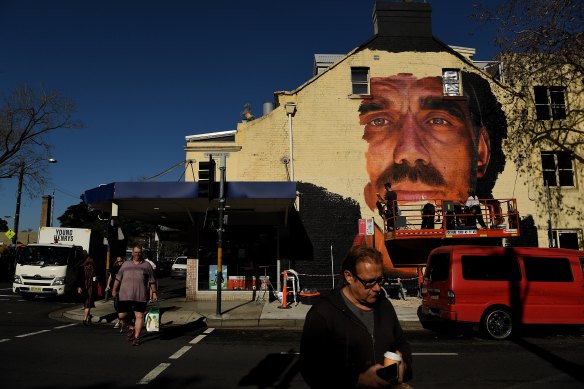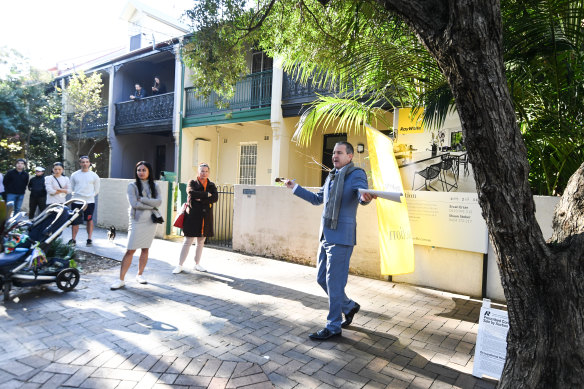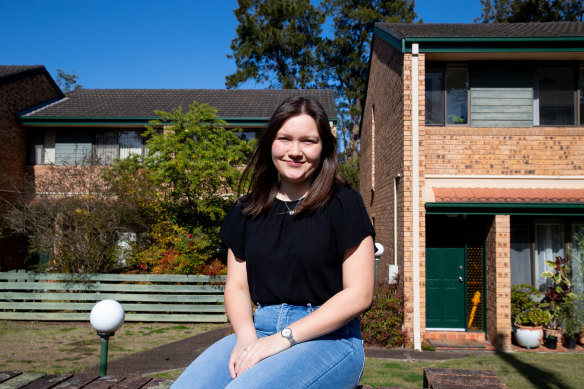Big business, unions and university bosses have joined forces to call for radical new solutions to the housing affordability crisis, including a “pattern book” approach to planning that would pre-approve certain designs for use throughout Sydney.
The Housing Now group, to be launched on Monday, has released a manifesto of seven demands it says will assist the state’s quest to build 375,000 homes over five years – the equivalent of building Surry Hills more than 30 times over.

Surry Hills is being held up as a blueprint for Sydney’s future. Credit: Kate Geraghty
It includes an unholy alliance of Business NSW, the state’s peak business lobby group, the Health Services Union and the Shoppies, the NSW Vice-Chancellors’ Committee, Sydney YIMBY and the Committee for Sydney think tank.
HSU secretary Gerard Hayes said his union was involved because nurses and other health workers could no longer afford to live near the hospitals where they work, which was bad for patients and contributed to staff shortages as workers looked for other careers.
“This is as much a health crisis as it’s a housing crisis,” he said.
Chair David Borger, a former NSW Labor housing minister who now heads Business Western Sydney, said the time had come to eliminate obstacles to housing growth, apply innovative thinking and “bury the NIMBY culture that pulls up the ladder from the grasp of future generations”.

The new alliance Housing Now says Sydney needs to build 30 more areas equivalent in size to Surry Hills in the next five years to meet its housing targets.Credit: Peter Rae
“We’ve built one house for every five people we’ve added to our state,” Borger said. “To solve this housing crisis Sydney needs to build the equivalent of 30 Surry Hills suburbs [in] the next five years.”
The suburb was chosen not only because it contains about 10,000 homes but because the type of housing built there – tightly packed terraces, along with a few medium-rise apartment blocks – reflects the kind of housing the group wants to see built elsewhere.
To that end, the alliance is pushing to go “back to the future” with a design pattern book, which would bring together architects and communities to pre-approve a suite of designs for townhouses, terraces and low-rise apartments. These could then be rolled out across Sydney without the need for more consultation.
“Many of the world’s greatest cities were designed using design pattern books, including ours,” the group’s manifesto says. “The Federation houses of Haberfield, the terraces of Paddington, and the art deco apartment buildings of Coogee – all pattern-book designs.”
The alliance is also calling on the government to urgently clear a backlog of planning proposals, prioritise and hasten land rezonings near transport corridors using a template approach, boost affordable housing, provide incentives for councils to over-deliver on their housing targets and reform the planning system.
With its large cohort of casual retail and fast food workers, the Shop, Distributive and Allied Employees Association, or Shoppies union, is also at the pointy end of the housing crisis.
Kascha Chin-Potter, 26, rents a 1.5-bedroom apartment in Marsfield with her partner. She studies, works two cafe jobs and knows how tough Sydney’s housing market can be, having grown up with a single mum who rented.
“My mum’s in her mid-50s and she is currently living with a friend because she can’t find anything she can afford by herself,” Chin-Potter says.

Kascha Chin-Potter has lived in rental housing her whole life. Credit: Edwina Pickles
A friend in Parramatta had their rent increased from $440 to $520 a week this year, she says. They recently moved out, and the new tenant is now paying $550.
“It’s very difficult to get a nice place,” Chin-Potter says. She believes that building more homes will help. “Time is of the essence. People are desperate now, [they] need solutions quickly.”
Labor came to power promising to increase the supply of public, private and affordable housing, as well as boosting renters’ rights, which was recently agreed by national cabinet.
Premier Chris Minns has signalled density bonuses for large developments that include at least 15 per cent affordable housing, and the government is expected to soon announce a new set of housing targets and its plans for transit-oriented developments, especially near metro stations.
NSW Vice-Chancellors’ Committee convenor Barney Glover said evidence-based policy was critical to addressing the crisis, as were industry-partnered land use options that “universities could potentially pursue with government through community benefit”.
The Morning Edition newsletter is our guide to the day’s most important and interesting stories, analysis and insights. Sign up here.